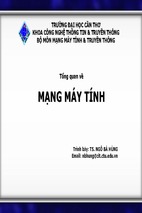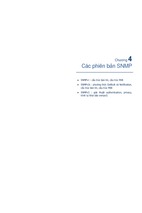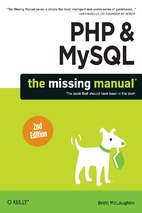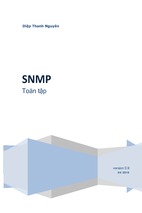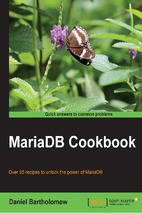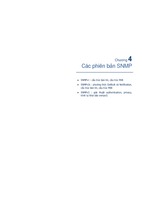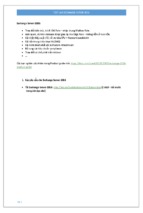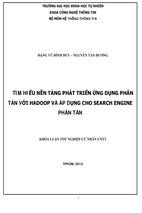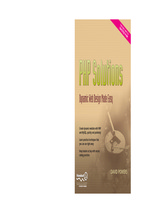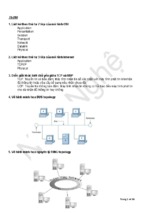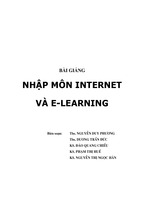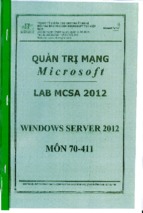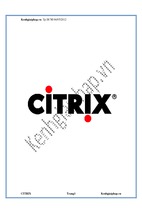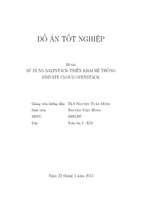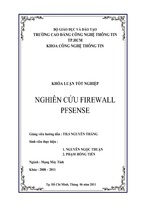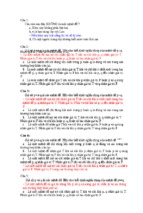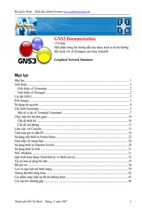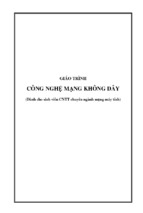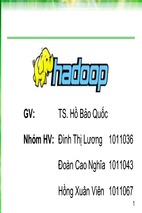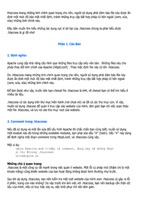1828xbook.fm Page i Thursday, July 26, 2007 3:10 PM
CCENT/CCNA ICND1
Official Exam Certification Guide,
Second Edition
Wendell Odom,
CCIE No. 1624
Cisco Press
800 East 96th Street
Indianapolis, Indiana 46240 USA
1828xbook.fm Page ii Thursday, July 26, 2007 3:10 PM
ii
CCENT/CCNA ICND1 Official Exam Certification Guide, Second Edition
Wendell Odom
Copyright© 2008 Cisco Systems, Inc.
Published by:
Cisco Press
800 East 96th Street
Indianapolis, IN 46240 USA
All rights reserved. No part of this book may be reproduced or transmitted in any form or by any means, electronic or
mechanical, including photocopying, recording, or by any information storage and retrieval system, without written
permission from the publisher, except for the inclusion of brief quotations in a review.
Printed in the United States of America
First Printing August 2007
Library of Congress Cataloging-in-Publication Data.
Odom, Wendell.
CCENT/CCNA ICND1 official exam certification guide / Wendell Odom.
p. cm.
ISBN 978-1-58720-182-0 (hardback w/cd) 1. Electronic data processing personnel--Certification. 2. Computer networks--Examinations--Study guides. I. Title.
QA76.3.O358 2007
004.6--dc22
2007029241
ISBN-13: 978-1-58720-182-0
ISBN-10: 1-58720-182-8
Warning and Disclaimer
This book is designed to provide information about the Cisco ICND1 (640-822), ICND2 (640-816), and CCNA
(640-802) exams. Every effort has been made to make this book as complete and accurate as possible, but no warranty
or fitness is implied.
The information is provided on an “as is” basis. The author, Cisco Press, and Cisco Systems, Inc. shall have neither
liability nor responsibility to any person or entity with respect to any loss or damages arising from the information
contained in this book or from the use of the discs or programs that may accompany it.
The opinions expressed in this book belong to the author and are not necessarily those of Cisco Systems, Inc.
1828xbook.fm Page iii Thursday, July 26, 2007 3:10 PM
iii
Trademark Acknowledgments
All terms mentioned in this book that are known to be trademarks or service marks have been appropriately
capitalized. Cisco Press or Cisco Systems, Inc. cannot attest to the accuracy of this information. Use of a term in this
book should not be regarded as affecting the validity of any trademark or service mark.
Corporate and Government Sales
The publisher offers excellent discounts on this book when ordered in quantity for bulk purchases or special sales,
which may include electronic versions and/or custom covers and content particular to your business, training goals,
marketing focus, and branding interests. For more information, please contact: U.S. Corporate and Government Sales
1-800-382-3419
[email protected]
For sales outside the United States please contact:
International Sales
[email protected]
Feedback Information
At Cisco Press, our goal is to create in-depth technical books of the highest quality and value. Each book is crafted
with care and precision, undergoing rigorous development that involves the unique expertise of members of the
professional technical community.
Reader feedback is a natural continuation of this process. If you have any comments about how we could improve
the quality of this book, or otherwise alter it to better suit your needs, you can contact us through e-mail at
[email protected]. Please be sure to include the book title and ISBN in your message.
We greatly appreciate your assistance.
Publisher: Paul Boger
Copy Editor: Gayle Johnson and Bill McManus
Associate Publisher: Dave Dusthimer
Technical Editors: Teri Cook, Brian D’Andrea,
and Steve Kalman
Cisco Representative: Anthony Wolfenden
Editorial Assistant: Vanessa Evans
Cisco Press Program Manager: Jeff Brady
Book and Cover Designer: Louisa Adair
Executive Editor: Brett Bartow
Composition: ICC Macmillan Inc.
Managing Editor: Patrick Kanouse
Indexer: Tim Wright
Senior Development Editor: Christopher Cleveland
Proofreader: Suzanne Thomas
Senior Project Editor: San Dee Phillips and Meg Shaw
1828xbook.fm Page iv Thursday, July 26, 2007 3:10 PM
iv
About the Author
Wendell Odom, CCIE No. 1624, has been in the networking industry since 1981. He
currently teaches QoS, MPLS, and CCNA courses for Skyline Advanced Technology
Services (http://www.skyline-ats.com). He has also worked as a network engineer,
consultant, systems engineer, instructor, and course developer. He is the author of all
previous editions of the CCNA Exam Certification Guide, as well as the Cisco QOS Exam
Certification Guide, Second Edition, Computer Networking First-Step, CCIE Routing and
Switching Official Exam Certification Guide, Second Edition, and CCNA Video Mentor—
all from Cisco Press.
1828xbook.fm Page v Thursday, July 26, 2007 3:10 PM
v
About the Technical Reviewers
Teri Cook (CCSI, CCDP, CCNP, CCDA, CCNA, MCT, and MCSE 2000/2003: Security)
has more than ten years of experience in the IT industry. She has worked with different
types of organizations in the private business and DoD sectors, providing senior-level
network and security technical skills in the design and implementation of complex
computing environments. Since obtaining her certifications, Teri has been committed to
bringing quality IT training to IT professionals as an instructor. She is an outstanding
instructor who uses real-world experience to present complex networking technologies. As
an IT instructor, Teri has been teaching Cisco classes for more than five years.
Brian D’Andrea (CCNA, CCDA, MCSE, A+, and Net+) has 11 years of IT experience in
both medical and financial environments, where planning and supporting critical
networking technologies were his primary responsibilities. For the last five years he has
dedicated himself to technical training. Brian spends most of his time with The Training
Camp, an IT boot camp provider. Using his real-world experience and his ability to break
difficult concepts into a language that students can understand, Brian has successfully
trained hundreds of students for both work and certification endeavors.
Stephen Kalman is a data security trainer. He is the author or tech editor of more than
20 books, courses, and CBT titles. His most recent book is Web Security Field Guide,
published by Cisco Press. In addition to those responsibilities he runs a consulting
company, Esquire Micro Consultants, which specializes in network security assessments
and forensics.
Mr. Kalman holds SSCP, CISSP, ISSMP, CEH, CHFI, CCNA, CCSA (Checkpoint), A+,
Network+ and Security+ certifications and is a member of the New York State Bar.
1828xbook.fm Page vi Thursday, July 26, 2007 3:10 PM
vi
Dedication
For Brett Bartow. Thanks for being such a steady, insightful, and incredibly trustworthy
guide through the publishing maze.
1828xbook.fm Page vii Thursday, July 26, 2007 3:10 PM
vii
Acknowledgments
The team who helped produce this book has been simply awesome. Everyone who touched
this book has made it better, and they’ve been particularly great at helping catch the errors
that always creep into the manuscript.
Brian, Teri, and Steve all did a great job TEing the book. Besides helping a lot with
technical accuracy, Brian made a lot of good suggestions about traps that he sees when
teaching CCNA classes, helping the book avoid those same pitfalls. Teri’s ability to see
each phrase in the context of an entire chapter, or the whole book, was awesome, helping
catch things that no one would otherwise catch. Steve spent most of his TE time on the
ICND2 book, but he did lend great help with this one, particularly with his reviews of the
security-oriented topics, an area in which he’s an expert. And more so than any other book
I’ve written, the TEs really sunk their teeth into the specifics of every example, helping
catch errors. Thanks so much!
Another (ho-hum) all-star performance from Chris Cleveland, who developed the book.
Now I empathize with sports writers who have to write about the local team’s star who bats
.300, hits 40 homers, and drives in 100 runs, every year, for his whole career. How many
ways can you say he does a great job? I’ll keep it simple: Thanks, Chris.
The wonderful and mostly hidden production folks did their usual great job. When every
time I see how they reworded something, and think, “Wow; why didn’t I write that?”, it
makes me appreciate the kind of team we have at Cisco Press. The final copy edit, figure
review, and pages review process required a fair amount of juggling and effort as well –
thanks to Patrick’s team, especially San Dee, Meg, Tonya, for working so well with all the
extra quality initiatives we’ve implemented. Thanks to you all!
Additionally, several folks who didn’t have any direct stake in the book also helped it along.
Thanks to Frank Knox for the discussions on the exams, why they’re so difficult, and about
troubleshooting. Thanks to Rus Healy for the help with wireless. Thanks to the Mikes at
Skyline for making my schedule work to get this book (and the ICND2 book) out the door.
And thanks to the course and exam teams at Cisco for the great early communications and
interactions about the changes to the courses and exams.
Finally, thanks to my wife Kris for all her support with my writing efforts, her prayers,
and her understanding when the deadline didn’t quite match with our vacation plans this
summer. And thanks to Jesus Christ—all this effort is just striving after the wind without
Him.
1828xbook.fm Page viii Thursday, July 26, 2007 3:10 PM
viii
This Book Is Safari Enabled
The Safari® Enabled icon on the cover of your favorite technology book means that the book is available through Safari Bookshelf. When you buy this book, you get free access to the online
edition for 45 days.
Safari Bookshelf is an electronic reference library that lets you
easily search thousands of technical books, find code samples,
download chapters, and access technical information whenever
and wherever you need it.
To gain 45-day Safari Enabled access to this book:
■
Go to http://www.ciscopress.com/safarienabled.
■
Complete the brief registration form.
■
Enter the coupon code 6EM9-WNXL-7Z1E-9UL2-KAEC.
If you have difficulty registering on Safari Bookshelf or accessing the online edition, please e-mail
[email protected].
1828xbook.fm Page ix Thursday, July 26, 2007 3:10 PM
ix
Contents at a Glance
Foreword
xxvi
Introduction
xxvii
Part I
Networking Fundamentals
3
Chapter 1
Introduction to Computer Networking Concepts
Chapter 2
The TCP/IP and OSI Networking Models
Chapter 3
Fundamentals of LANs
Chapter 4
Fundamentals of WANs
Chapter 5
Fundamentals of IP Addressing and Routing
Chapter 6
Fundamentals of TCP/IP Transport, Applications,
and Security 129
Part II
LAN Switching
Chapter 7
Ethernet LAN Switching Concepts
Chapter 8
Operating Cisco LAN Switches
Chapter 9
Ethernet Switch Configuration
Chapter 10
Ethernet Switch Troubleshooting
Chapter 11
Wireless LANs
Part III
IP Routing
Chapter 12
IP Addressing and Subnetting
Chapter 13
Operating Cisco Routers
Chapter 14
Routing Protocol Concepts and Configuration
Chapter 15
Troubleshooting IP Routing
Part IV
Wide-Area Networks
Chapter 16
WAN Concepts
Chapter 17
WAN Configuration
5
17
41
71
93
165
167
197
231
267
299
329
399
509
511
539
331
471
435
1828xbook.fm Page x Thursday, July 26, 2007 3:10 PM
x
Part V
Final Preparation
563
Chapter 18
Final Preparation
Part VI
Appendixes
Appendix A
Answers to the “Do I Know This Already?” Quizzes
Appendix B
Decimal to Binary Conversion Table
Appendix C
ICND1 Exam Updates: Version 1.0
Glossary
599
Index
624
Part VII
CD-Only
Appendix C
ICND1 Exam Updates: Version 1.0
Appendix D
Subnetting Practice
Appendix E
Subnetting Reference Pages
Appendix F
Additional Scenarios
565
575
Appendix G Subnetting Video Reference
Appendix H
Memory Tables
Appendix I
Memory Tables Answer Key
Appendix J
ICND1 Open-Ended Questions
591
595
577
1828xbook.fm Page xi Thursday, July 26, 2007 3:10 PM
xi
Contents
Foreword
xxvi
Introduction
Part I
xxvii
Networking Fundamentals
Chapter 1
3
Introduction to Computer Networking Concepts
Perspectives on Networking 5
The Flintstones Network: The First Computer Network?
Chapter 2
The TCP/IP and OSI Networking Models
“Do I Know This Already?” Quiz 18
Foundation Topics 21
The TCP/IP Protocol Architecture 22
The TCP/IP Application Layer 23
The TCP/IP Transport Layer 25
The TCP/IP Internet Layer 27
The TCP/IP Network Access Layer 28
Data Encapsulation Terminology 30
The OSI Reference Model 32
Comparing OSI and TCP/IP 32
OSI Layers and Their Functions 34
OSI Layering Concepts and Benefits 35
OSI Encapsulation Terminology 36
Exam Preparation Tasks 38
Review all the Key Topics 38
Complete the Tables and Lists from Memory
Definitions of Key Terms 38
OSI Reference 39
Chapter 3
Fundamentals of LANs
5
8
17
38
41
“Do I Know This Already?” Quiz 41
Foundation Topics 45
An Overview of Modern Ethernet LANs 45
A Brief History of Ethernet 48
The Original Ethernet Standards: 10BASE2 and 10BASE5 48
Repeaters 50
Building 10BASE-T Networks with Hubs 51
Ethernet UTP Cabling 52
UTP Cables and RJ-45 Connectors 52
Transmitting Data Using Twisted Pairs 54
UTP Cabling Pinouts for 10BASE-T and 100BASE-TX 55
1000BASE-T Cabling 58
1828xbook.fm Page xii Thursday, July 26, 2007 3:10 PM
xii
Improving Performance by Using Switches Instead of Hubs 58
Increasing Available Bandwidth Using Switches 61
Doubling Performance by Using Full-Duplex Ethernet 62
Ethernet Layer 1 Summary 63
Ethernet Data-Link Protocols 63
Ethernet Addressing 64
Ethernet Framing 65
Identifying the Data Inside an Ethernet Frame 67
Error Detection 68
Exam Preparation Tasks 69
Review All the Key Topics 69
Complete the Tables and Lists from Memory 69
Definitions of Key Terms 69
Chapter 4
Fundamentals of WANs
71
“Do I Know This Already?” Quiz 71
Foundation Topics 74
OSI Layer 1 for Point-to-Point WANs 74
WAN Connections from the Customer Viewpoint 77
WAN Cabling Standards 78
Clock Rates, Synchronization, DCE, and DTE 80
Building a WAN Link in a Lab 81
Link Speeds Offered by Telcos 82
OSI Layer 2 for Point-to-Point WANs 83
HDLC 83
Point-to-Point Protocol 85
Point-to-Point WAN Summary 85
Frame Relay and Packet-Switching Services 86
The Scaling Benefits of Packet Switching 86
Frame Relay Basics 87
Exam Preparation Tasks 91
Review All the Key Topics 91
Complete the Tables and Lists from Memory 91
Definitions of Key Terms 91
Chapter 5
Fundamentals of IP Addressing and Routing
93
“Do I Know This Already?” Quiz 93
Foundation Topics 98
Overview of Network Layer Functions 98
Routing (Forwarding) 99
PC1’s Logic: Sending Data to a Nearby Router 100
R1 and R2’s Logic: Routing Data Across the Network 100
R3’s Logic: Delivering Data to the End Destination 100
1828xbook.fm Page xiii Thursday, July 26, 2007 3:10 PM
xiii
Network Layer Interaction with the Data Link Layer 101
IP Packets and the IP Header 102
Network Layer (Layer 3) Addressing 103
Routing Protocols 104
IP Addressing 105
IP Addressing Definitions 105
How IP Addresses Are Grouped 106
Classes of Networks 107
The Actual Class A, B, and C Network Numbers 109
IP Subnetting 110
IP Routing 114
Host Routing 114
Router Forwarding Decisions and the IP Routing Table 115
IP Routing Protocols 118
Network Layer Utilities 121
Address Resolution Protocol and the Domain Name System 121
DNS Name Resolution 122
The ARP Process 122
Address Assignment and DHCP 123
ICMP Echo and the ping Command 125
Exam Preparation Tasks 126
Review All the Key Topics 126
Complete the Tables and Lists from Memory 127
Definitions of Key Terms 127
Chapter 6
Fundamentals of TCP/IP Transport, Applications, and Security
“Do I Know This Already?” Quiz 129
Foundation Topics 133
TCP/IP Layer 4 Protocols: TCP and UDP 133
Transmission Control Protocol 134
Multiplexing Using TCP Port Numbers 135
Popular TCP/IP Applications 138
Error Recovery (Reliability) 140
Flow Control Using Windowing 141
Connection Establishment and Termination 142
Data Segmentation and Ordered Data Transfer 144
User Datagram Protocol 145
TCP/IP Applications 146
QoS Needs and the Impact of TCP/IP Applications 146
The World Wide Web, HTTP, and SSL 149
Universal Resource Locators 150
Finding the Web Server Using DNS 150
Transferring Files with HTTP 152
129
1828xbook.fm Page xiv Thursday, July 26, 2007 3:10 PM
xiv
Network Security 153
Perspectives on the Sources and Types of Threats 154
Firewalls and the Cisco Adaptive Security Appliance (ASA)
Anti-x 160
Intrusion Detection and Prevention 160
Virtual Private Networks (VPN) 161
Exam Preparation Tasks 163
Review All the Key Topics 163
Complete the Tables and Lists from Memory 163
Definitions of Key Terms 163
Part II LAN Switching
Chapter 7
158
165
Ethernet LAN Switching Concepts
167
“Do I Know This Already?” Quiz 167
Foundation Topics 171
LAN Switching Concepts 171
Historical Progression: Hubs, Bridges, and Switches 171
Switching Logic 174
The Forward Versus Filter Decision 175
How Switches Learn MAC Addresses 177
Flooding Frames 178
Avoiding Loops Using Spanning Tree Protocol 179
Internal Processing on Cisco Switches 180
LAN Switching Summary 182
LAN Design Considerations 183
Collision Domains and Broadcast Domains 183
Collision Domains 183
Broadcast Domains 184
The Impact of Collision and Broadcast Domains on LAN Design
Virtual LANs (VLAN) 187
Campus LAN Design Terminology 188
Ethernet LAN Media and Cable Lengths 191
Exam Preparation Tasks 194
Review All the Key Topics 194
Complete the Tables and Lists from Memory 194
Definitions of Key Terms 195
Chapter 8
Operating Cisco LAN Switches
197
“Do I Know This Already?” Quiz 197
Foundation Topics 200
Accessing the Cisco Catalyst 2960 Switch CLI 200
Cisco Catalyst Switches and the 2960 Switch 201
185
1828xbook.fm Page xv Thursday, July 26, 2007 3:10 PM
xv
Switch Status from LEDs 202
Accessing the Cisco IOS CLI 205
CLI Access from the Console 206
Accessing the CLI with Telnet and SSH 208
Password Security for CLI Access 208
User and Enable (Privileged) Modes 210
CLI Help Features 211
The debug and show Commands 213
Configuring Cisco IOS Software 214
Configuration Submodes and Contexts 215
Storing Switch Configuration Files 217
Copying and Erasing Configuration Files 220
Initial Configuration (Setup Mode) 221
Exam Preparation Tasks 226
Review All the Key Topics 226
Complete the Tables and Lists from Memory 226
Definitions of Key Terms 226
Command References 226
Chapter 9
Ethernet Switch Configuration
231
“Do I Know This Already?” Quiz 231
Foundation Topics 235
Configuration of Features in Common with Routers 235
Securing the Switch CLI 235
Configuring Simple Password Security 236
Configuring Usernames and Secure Shell (SSH) 239
Password Encryption 242
The Two Enable Mode Passwords 244
Console and vty Settings 245
Banners 245
History Buffer Commands 246
The logging synchronous and exec-timeout Commands
LAN Switch Configuration and Operation 248
Configuring the Switch IP Address 248
Configuring Switch Interfaces 251
Port Security 253
VLAN Configuration 256
Securing Unused Switch Interfaces 259
Exam Preparation Tasks 261
Review All the Key Topics 261
Complete the Tables and Lists from Memory 261
Definitions of Key Terms 262
Command References 262
247
1828xbook.fm Page xvi Thursday, July 26, 2007 3:10 PM
xvi
Chapter 10 Ethernet Switch Troubleshooting
267
“Do I Know This Already?” Quiz 267
Foundation Topics 271
Perspectives on Network Verification and Troubleshooting 271
Attacking Sim Questions 271
Simlet Questions 272
Multiple-Choice Questions 273
Approaching Questions with an Organized Troubleshooting Process 273
Isolating Problems at Layer 3, and Then at Layers 1 and 2 275
Troubleshooting as Covered in This Book 276
Verifying the Network Topology with Cisco Discovery Protocol 277
Analyzing Layer 1 and 2 Interface Status 282
Interface Status Codes and Reasons for Nonworking States 282
Interface Speed and Duplex Issues 284
Common Layer 1 Problems on Working Interfaces 287
Analyzing the Layer 2 Forwarding Path with the MAC Address Table 289
Analyzing the Forwarding Path 292
Port Security and Filtering 293
Exam Preparation Tasks 295
Review All the Key Topics 295
Complete the Tables and Lists from Memory 295
Definitions of Key Terms 295
Command References 295
Chapter 11 Wireless LANs
299
“Do I Know This Already?” Quiz 299
Foundation Topics 302
Wireless LAN Concepts 302
Comparisons with Ethernet LANs 302
Wireless LAN Standards 304
Modes of 802.11 Wireless LANs 305
Wireless Transmissions (Layer 1) 307
Wireless Encoding and Nonoverlapping DSSS Channels 309
Wireless Interference 311
Coverage Area, Speed, and Capacity 311
Media Access (Layer 2) 314
Deploying WLANs 315
Wireless LAN Implementation Checklist 315
Step 1: Verify the Existing Wired Network 316
Step 2: Install and Configure the AP’s Wired and IP Details 317
Step 3: Configure the AP’s WLAN Details 317
Step 4: Install and Configure One Wireless Client 318
Step 5: Verify That the WLAN Works from the Client 319
1828xbook.fm Page xvii Thursday, July 26, 2007 3:10 PM
xvii
Wireless LAN Security 320
WLAN Security Issues 320
The Progression of WLAN Security Standards 322
Wired Equivalent Privacy (WEP) 322
SSID Cloaking and MAC Filtering 323
The Cisco Interim Solution Between WEP and 802.11i
Wi-Fi Protected Access (WPA) 325
IEEE 802.11i and WPA-2 325
Exam Preparation Tasks 327
Review All the Key Topics 327
Complete the Tables and Lists from Memory 327
Definitions of Key Terms 327
Part III IP Routing
324
329
Chapter 12 IP Addressing and Subnetting
331
“Do I Know This Already?” Quiz 331
Foundation Topics 336
Exam Preparation Tools for Subnetting 336
Suggested Subnetting Preparation Plan 337
More Practice Using a Subnet Calculator 338
IP Addressing and Routing 339
IP Addressing Review 339
Public and Private Addressing 341
IP Version 6 Addressing 342
IP Subnetting Review 343
IP Routing Review 345
Math Operations Used When Subnetting 347
Converting IP Addresses and Masks from Decimal to Binary and Back Again 347
Performing a Boolean AND Operation 349
Prefix Notation/CIDR Notation 351
Binary Process to Convert Between Dotted Decimal and Prefix Notation 352
Decimal Process to Convert Between Dotted Decimal and Prefix
Notation 353
Practice Suggestions 355
Analyzing and Choosing Subnet Masks 355
Analyzing the Subnet Mask in an Existing Subnet Design 356
The Three Parts: Network, Subnet, and Host 356
Binary Process: Finding the Number of Network, Subnet, and Host Bits 357
Decimal Process: Finding the Number of Network, Subnet, and Host Bits 358
Determining the Number of Subnets and Number of Hosts Per Subnet 359
Number of Subnets: Subtract 2, or Not? 360
Practice Examples for Analyzing Subnet Masks 361
1828xbook.fm Page xviii Thursday, July 26, 2007 3:10 PM
xviii
Choosing a Subnet Mask that Meets Design Requirements 362
Finding the Only Possible Mask 363
Finding Multiple Possible Masks 365
Choosing the Mask that Maximizes the Number of Subnets or Hosts 366
Practice Suggestions 367
Analyzing Existing Subnets 368
Finding the Subnet Number: Binary 368
Finding the Subnet Number: Binary Shortcut 371
Finding the Subnet Broadcast Address: Binary 372
Finding the Range of Valid IP Addresses in a Subnet 375
Finding the Subnet, Broadcast Address, and Range of Addresses: Decimal
Process 377
Decimal Process with Easy Masks 377
Decimal Process with Difficult Masks 378
Finding the Broadcast Address: Decimal 381
Summary of Decimal Processes to Find the Subnet, Broadcast, and Range 382
Practice Suggestions 383
Design: Choosing the Subnets of a Classful Network 384
Finding All Subnets with Fewer Than 8 Subnet Bits 384
Finding All Subnets with Exactly 8 Subnet Bits 388
Practice Suggestions 389
Finding All Subnets with More Than 8 Subnet Bits 389
More Practice Suggestions 393
Exam Preparation Tasks 394
Review All the Key Topics 394
Complete the Tables and Lists from Memory 396
Definitions of Key Terms 396
Read Appendix F Scenario 1, Part A 396
Subnetting Questions and Processes 396
Chapter 13 Operating Cisco Routers
399
“Do I Know This Already?” Quiz 399
Foundation Topics 403
Installing Cisco Routers 403
Installing Enterprise Routers 403
Cisco Integrated Services Routers 405
Physical Installation 406
Installing Internet Access Routers 407
A SOHO Installation with a Separate Switch, Router, and
Cable Modem 407
A SOHO Installation with an Integrated Switch, Router, and
DSL Modem 408
Regarding the SOHO Devices Used in This Book 409
1828xbook.fm Page xix Thursday, July 26, 2007 3:10 PM
xix
Cisco Router IOS CLI 409
Comparisons Between the Switch CLI and Router CLI 410
Router Interfaces 411
Interface Status Codes 413
Router Interface IP Addresses 414
Bandwidth and Clock Rate on Serial Interfaces 415
Router Auxiliary (Aux) Port 417
Initial Configuration (Setup Mode) 417
Upgrading Cisco IOS Software and the Cisco IOS Software Boot Process 420
Upgrading a Cisco IOS Software Image into Flash Memory 420
The Cisco IOS Software Boot Sequence 423
The Three Router Operating Systems 425
The Configuration Register 425
How a Router Chooses Which OS to Load 426
The show version Command and Seeing the Configuration Register’s
Value 429
Exam Preparation Tasks 431
Review All the Key Topics 431
Complete the Tables and Lists from Memory 431
Definitions of Key Terms 432
Read Appendix F Scenario 2 432
Command References 432
Chapter 14 Routing Protocol Concepts and Configuration
435
“Do I Know This Already?” Quiz 435
Foundation Topics 439
Connected and Static Routes 439
Connected Routes 439
Static Routes 442
Extended ping Command 444
Default Routes 446
Routing Protocol Overview 448
RIP-2 Basic Concepts 449
Comparing and Contrasting IP Routing Protocols 450
Interior and Exterior Routing Protocols 451
Routing Protocol Types/Algorithms 452
Metrics 452
Autosummarization and Manual Summarization 454
Classless and Classful Routing Protocols 454
Convergence 455
Miscellaneous Comparison Points 455
Summary of Interior Routing Protocols 455
1828xbook.fm Page xx Thursday, July 26, 2007 3:10 PM
xx
Configuring and Verifying RIP-2 456
RIP-2 Configuration 456
Sample RIP Configuration 457
RIP-2 Verification 458
Interpreting the Output of the show ip route Command
Administrative Distance 461
The show ip protocols Command 462
Examining RIP Messages with debug 464
Exam Preparation Tasks 467
Review All the Key Topics 467
Complete the Tables and Lists from Memory 467
Definitions of Key Terms 468
Command References 468
Chapter 15 Troubleshooting IP Routing
471
“Do I Know This Already?” Quiz 471
Foundation Topics 475
IP Troubleshooting Tips and Tools 475
IP Addressing 475
Avoiding Reserved IP Addresses 475
One Subnet, One Mask, for Each LAN 476
Summary of IP Addressing Tips 478
Host Networking Commands 478
Troubleshooting Host Routing Problems 482
Finding the Matching Route on a Router 483
Troubleshooting Commands 485
The show ip arp Command 485
The traceroute Command 486
Telnet and Suspend 487
A Routing Troubleshooting Scenario 491
Scenario Part A: Tasks and Questions 491
Scenario Part A: Answers 494
Scenario Part B: Analyze Packet/Frame Flow 495
Scenario Part B: Answers 496
Scenario Part B: Question 1 497
Scenario Part B: Question 2 498
Scenario Part B: Question 3 499
Scenario Part B: Question 4 501
Scenario Part B: Question 5 501
Scenario Part B: Question 6 502
Scenario Part B: Question 7 503
Scenario Part C: Analyze Connected Routes 503
Scenario Part C: Answers 503
460

